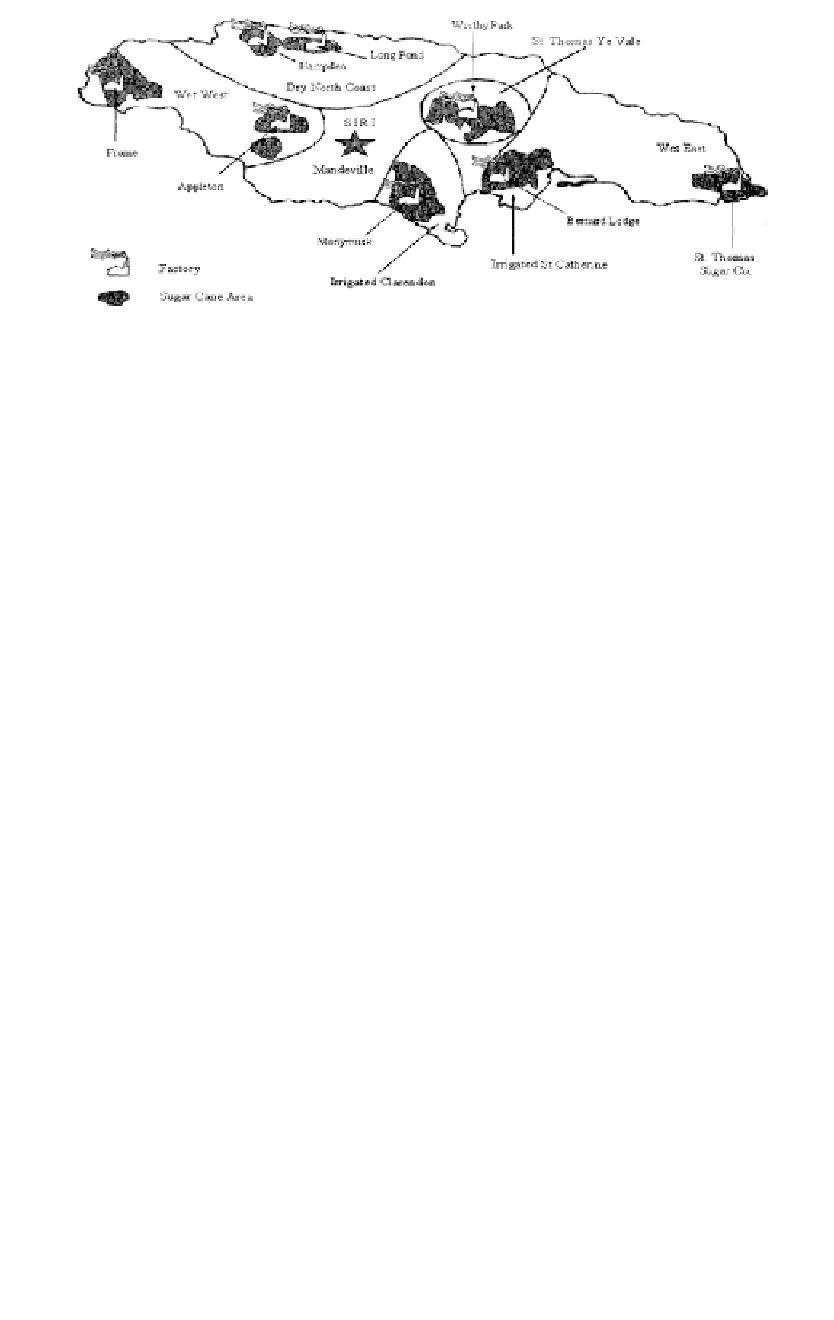Agriculture Reference
In-Depth Information
1
2
3
4
5
6
7
8
9
10
11
12
13
14
15
16
17
18
19
20
21
22
23
24
25
26
27
28
29
30
31
32
33
34
35
36
37
38
39
40
41
42
43
44
45
46
Figure 11.3
Ecological regions of the Jamaican sugar industry.
[147
A
griculture in the West Indies
Agriculture in the West Indies is heavily dependent on the seasonal rainfall.
This is true even of the larger territories of the Greater Antilles. The plant-
ing/harvesting cycles of both small farmers and large-scale agricultural pro-
ducers revolve around the wet and dry seasons, especially since irrigation
is hardly an option for the small farmers due to high implementation and
maintenance costs. Estimates of agricultural production in Jamaica indicate
that 95% of all domestic agricultural production is rain-fed (C. Thompson,
personal communication, 2002).
Agriculture is important to the economies of the West Indian territo-
ries. Sugarcane, banana, and rice are the most important crops from the
standpoints of export earnings, contributions to national economies, and
the number of persons employed. Of the three, rice is largely produced in
Guyana and Trinidad. None of the other smaller islands cultivate rice to
the extent of even self-sufficiency.
Banana, the second most important agricultural crop of the West Indies,
is the backbone of the economies of the Windward Islands of Dominica,
Grenada, St. Vincent, St. Lucia, and the French island territories of Mar-
tinique and Guadeloupe. Banana cultivation accounts for half of the export
earnings and generates employment ranging from 23 to 34% of the total
agricultural employment in these islands (Dearden, 1996).
Sugarcane is the main agricultural crop in the West Indies. Several
West Indian economies were founded on sugarcane, and though significant
plantings have disappeared from islands such as Antigua and Grenada, sug-
arcane still remains the dominant crop in Barbados, Guyana, Trinidad and
Tobago, St. Kitts, Belize, and Jamaica in the English-speaking Caribbean.
Among Spanish-speaking territories, until the 1960s and early 1970s, Cuba
was the world's largest sugar exporter, and the Dominican Republic still is
a major producer. Sugarcane also dominates the agricultural sectors of the
French islands of Guadeloupe and Martinique.
Line
——
-4.5
——
Shor
PgEn
[147













































Search WWH ::

Custom Search